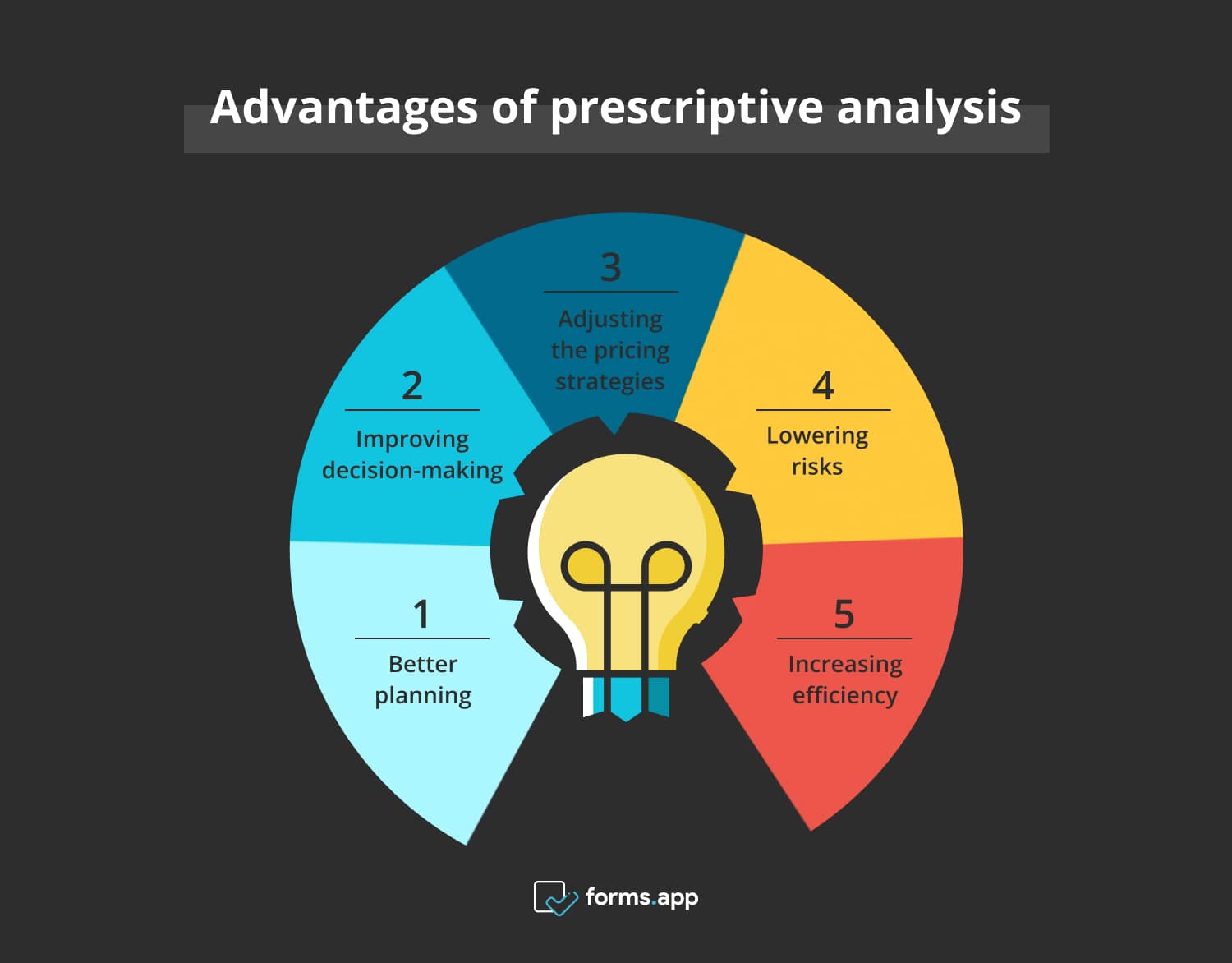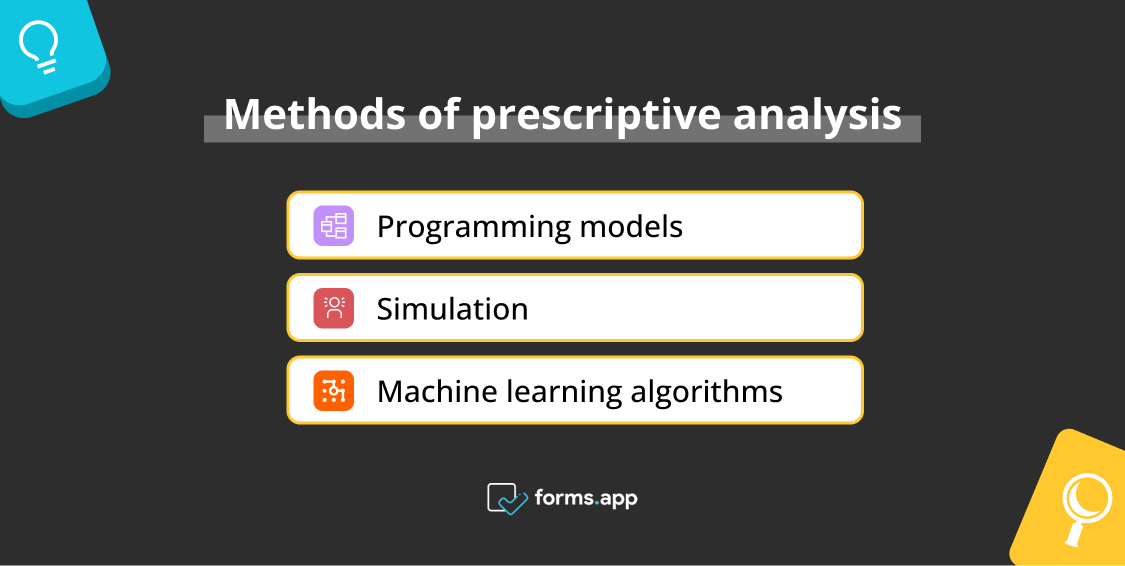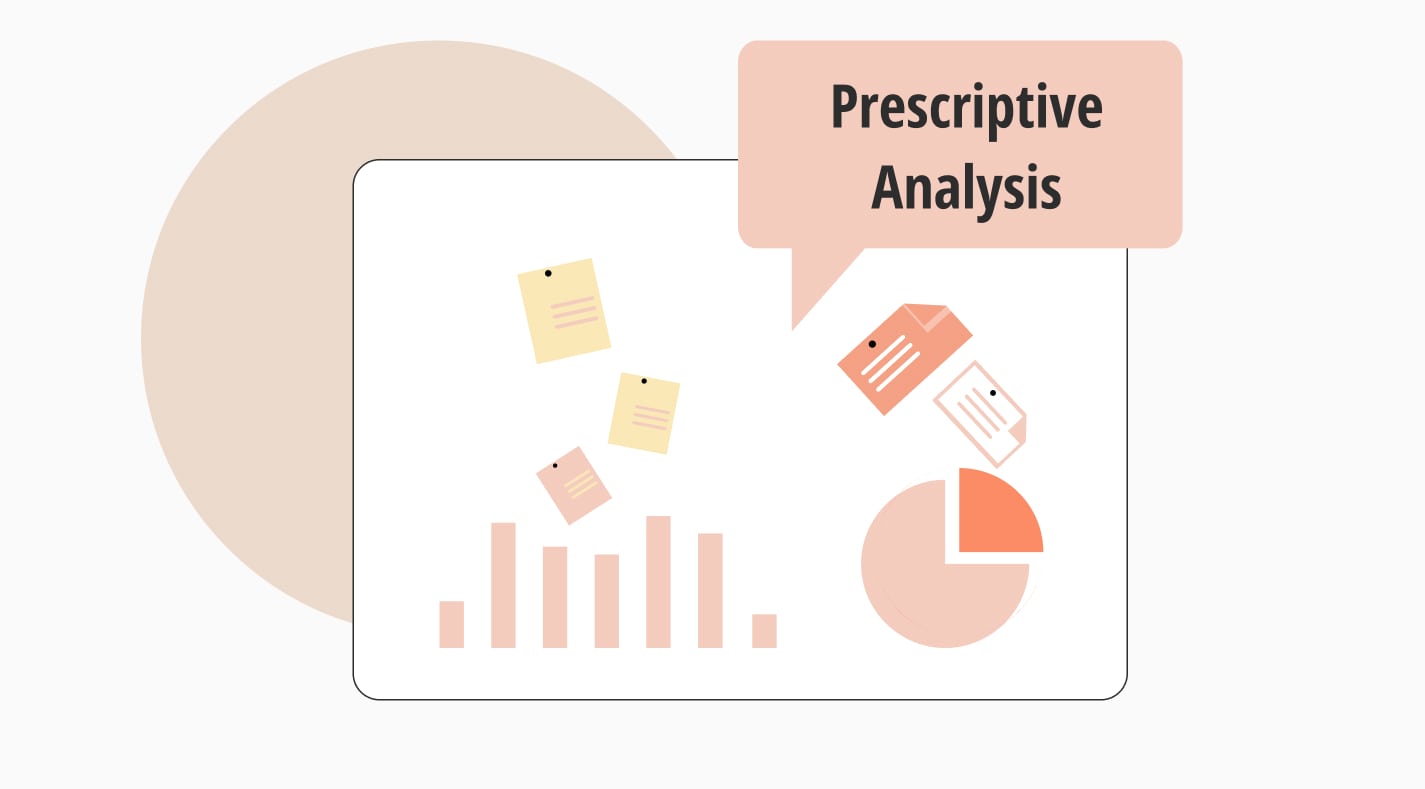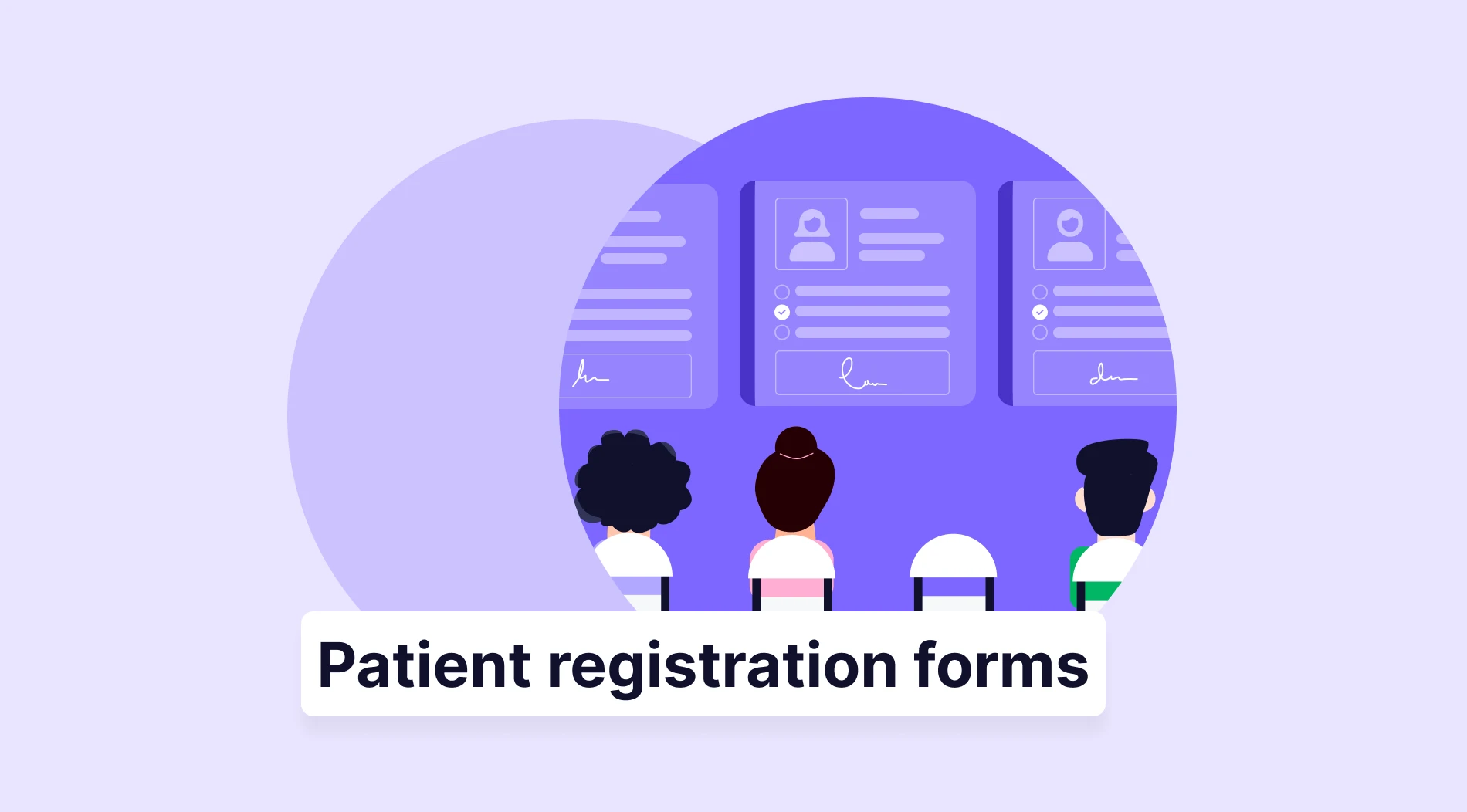Prescriptive analysis is one of the important and main types of business analytics in the marketing world. It has demonstrated its benefits many times by being used in many areas, from marketing to finance. It achieved this success by going beyond predictive and descriptive analysis with its actionable insights.
Prescriptive analytics works with many types of data analytics models. It uses AI statistical modeling to show how business processes work. It achieves this with given data sets and produces high-level desired outcomes. Now, for more details, you can check the following headings, which will explain exactly what the prescriptive analysis is and what its benefits and methods are.
What is a prescriptive analysis?
Prescriptive analysis is a business research method developed as a third step after descriptive and predictive analysis.
When you put the ability to interpret on top of predictive analysis, you get prescriptive analysis. Or, it is the prescriptive analysis that guides you in evaluating the initial analysis results. That's why it is often referred to by data scientists as the "final" type of analysis. But as you will see, prescriptive analysis means much more than all of these definitions.
Advantages of prescriptive analysis
Prescriptive analysis contributes to you in many areas and in many situations. It is an innovative method as it often offers a different perspective beyond other types of analysis. For example, you can only use narrative analysis in specific scenarios, but prescriptive analysis isn’t like that.
Whether you use it in marketing, customer satisfaction, or financing, you will still be able to benefit from it. To further explain the contributions of prescriptive analysis, you can look at the following key advantages:

Benefits of prescriptive analysis
- Better planning: Prescriptive analysis adds a new dimension to strategic planning by seeing beyond what is and what could be. It is an invaluable tool for understanding people in a humane way. Because it evaluates business elements just like people evaluate daily events and produce scenarios. As a result, the scenarios guide the planning of organizations.
- Improving decision-making: Another critical advantage is that it does not have a narrow perspective, unlike other types of analysis. It should not be forgotten that a dynamic structure, such as a business, comes together with many factors, not a single factor. The prescriptive analysis is useful for businesses in understanding these multifactors and making ideas accordingly.
- Adjusting the pricing strategies: Regulating pricing at the right time and with the right move is of vital importance for businesses. For this reason, even when there is no problem, predictions should be made, and what actions to take in possible scenarios should be decided in advance. Here, prescriptive analysis is an essential tool to provide you with both in advance and in real-time pricing advice.
- Lowering risks: It is unpredictable when a business will encounter risk. Therefore, doing prescriptive analysis helps you by making predictions and solutions about the future.
- Increasing efficiency: Perhaps one of the most striking aspects of prescriptive analysis is speeding up the analysis process. Analyzes that used to be done through manual processes are now accelerating the workflow with the help of AI. When the workflow accelerates, the business naturally has more time for other problems or innovations.
Methods of prescriptive analysis
In fact, the methods of prescriptive analysis are quite broad, and most of them are closely related to artificial intelligence. So don't be surprised to see AI-based analysis among the methods. Instead of all of the prescriptive analytics tools, a few of the frequently used ones will be explained.

Prescriptive analysis methods
1. Programming models
You can use the programming method to produce mathematical solutions to complex business problems. You can achieve this by using one of the programming types, such as non-linear or linear programming.
Example: You want to expand your production line in a factory. You can achieve this with a programming model that takes into account the purchase of new production machines, labor, and raw material requirements.
2. Simulation
Simulation is created in prescriptive analysis to mimic real-world scenarios. It is a suitable area to test the decisions a business will make and the strategies it will create. It can offer an effective solution, especially when used on a multifactorial issue.
Example: You are going to open a store, and you need an idea about the layout of the products in the store. You know there is a logic to the layout rather than placing it haphazardly, but you don't know exactly how to do it. With a simulation, you can examine many factors, such as the condition of the store in crowded customers or which shelves customers will pass by while walking around your store.
3. Machine learning algorithms
It is an analysis method that informs you about the precautions and initiatives you can take in possible scenarios using the AI algorithm. AI is useful because it reaches data faster and more comprehensively, which is often not available to humans manually.
Example: You want to evaluate your sales according to customer demographics and provide personal service. Designing a machine learning model for this and feeding it with enough data from your business analysis is the basic step you must take. Then, AI will provide you with excellent feedback.
Frequently asked questions about prescriptive analysis
Prescriptive analysis is a branch that is still being developed because it emerged later than descriptive and predicted analysis. So, it can often be confused with other types of analysis, or it can become an issue of what exactly it is and why to use it. If you have questions like these in your mind, you can check the answers to the frequently asked questions below.
Predictive and prescriptive analysis are different stages in examining data. Predictive data analysis makes a statistical prediction about the future by adding very little interpretation to a phenomenon. However, prescriptive data analysis is a matter of interpretation beyond statistics.
It is a suggestion method to achieve desired goals. In other words, predictive analysis tells you what will happen, but it does not take you into action; it is the prescriptive analysis that does this.
As with every analysis, prescriptive analysis has its shortcomings. For example, the inadequacy and inconsistency of data may be a negative aspect, and the expense of maintaining it may be another negative aspect.
To answer briefly, AI uses both types of analysis. To give a long answer to this question, for example, predictive analysis is used as follows: AI analyzes historical data, extracts patterns, and makes a prediction about the future using these patterns. In prescriptive analysis, AI creates scenarios based on patterns using a different algorithm. Thus, it uses predictive analysis as the first step and then uses prescriptive analysis to interpret it.
This question is a very general question, and to answer it in general, you can use it in many areas, from healthcare to business, artificial intelligence, and economics. It is used because it helps people to come up with good choices in the decision-making process. In other words, it is a strategic method to achieve your goals or overcome a problem.
Prescriptive analysis is a solution representation method. It enables the evaluation of future predictions and appropriate responses to possible problems. In this, AI is mostly used because AI has the ability to analyze more than the predictions and patterns that humans are able to make.
Final words
Today, in almost all businesses, analysis data and decision-making mechanisms are in close contact. The reason for this inevitability is due to the benefits provided by the analyses. It was stated that the main types of analysis used are descriptive and predictive. Beyond these, the newly emerging prescriptive analysis has become the favorite of businesses as it offers broader scale and solution-oriented methods.
It has been explained that in this age of competitiveness, businesses need prescriptive analysis to keep up with ever-changing situations. So, taking this type of analysis as a guide will pave the way for success for you and your business.
Atakan is a content writer at forms.app. He likes to research various fields like history, sociology, and psychology. He knows English and Korean. His expertise lies in data analysis, data types, and methods.



